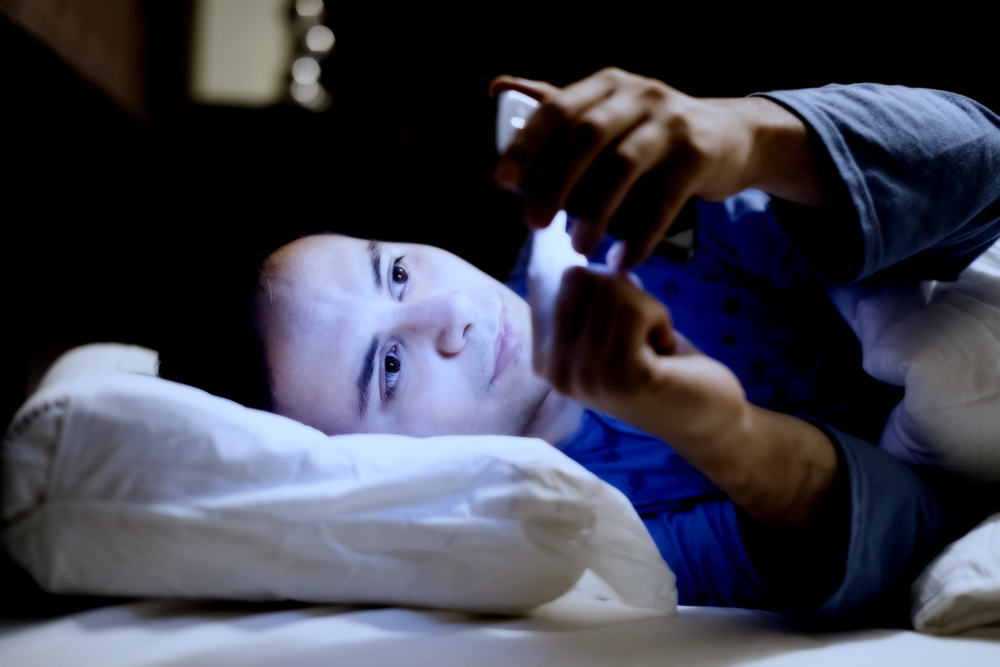Contents:
- Medical Video: Your smartphone is blinding you, here's what to do.
- 1. Disrupting the circadian rhythm
- 2. Causes retinal damage
- 3. Causes eye fatigue
Medical Video: Your smartphone is blinding you, here's what to do.
In the science of eye health, blue light or blue rays are classified as high-energy visible light (HEV light), which is visible light with short wavelengths, around 415 to 455 nm, and high energy levels. The biggest natural source of this type of ray is the sun. Apart from the sun, blue rays also come from various digital screens, such as computer screens, televisions, or smartphone and other electronic equipment to improve information and screen clarity. Some types of modern lighting, such as LED lights (light-emitting diode) and CFLs (compact fluorescent lamps), also emits high levels of blue light.
Because it is contained in sunlight, humans will often be exposed to blue light when doing outdoor activities during the day. During the day, blue light is a ray that is useful in increasing attention and mood someone. Blue light from the sun also plays a role in regulating one's natural sleep cycle, known as circadian rhythm. However, blue light will be dangerous for one's health when a person is too often exposed to blue light coming from the screen of an electronic device at night. What are the risks that might occur?
1. Disrupting the circadian rhythm
Excessive exposure to blue light at night can cause a decrease in the production of the hormone melatonin, a hormone that regulates the sleep cycle someone. Normally, the body produces a small amount of the hormone melatonin during the day, then increases in number at night, several hours before going to bed, and reaches its peak at midnight. Too much exposure to light, especially blue light, at night results in the retirement of one's sleep schedule, evenreset the person's sleep hours for a long period of time.
Since the 1990s, scientists conducted hundreds of experiments on the relationship between melatonin production in the body and the wavelength of light. The results of this experiment show that humans produce sensitivity peaks in light that is in the wavelength of the blue ray spectrum. In 2014, neuroscience experts also examined the difference in hours of sleep of people who read books using paper with people who read books using digital devices, better known as e-book. When entering predetermined hours of sleep, participants who read books through digital devices still look fresh and need more time to fall asleep, and have a REM phase (Rapid Eye Movement) less than those who read books through paper media. After eight hours of sleep, those who read using digital devices become more sleepy and need more time to wake up. This shows that exposure to blue light from a digital device can change circadian rhythm or someone's sleep schedule.
2. Causes retinal damage
Like other visible rays, blue light can enter the eye. But, the human eye does not have enough protection from exposure to blue light, both from sunlight and electronic equipment. A Harvard study states that blue rays have long been identified as the most dangerous rays for the retina. After penetrating the outside of the eye, blue light will reach the deepest part of the eye, the retina, and can cause long-term effects in the form of damage to the retina. On exposure to excessive blue light, a person's risk for macular degeneration, glaucomaand degenerative retinal disease.
Furthermore, in certain wavelengths, a blue ray is associated with age-related macular degeneration (AMD) or macular degeneration which can lead to loss of viewing ability. AMD is a deterioration of the macula, a part of the retina containing cells and macular pigments, which plays a role in controlling visual acuity (visual acuity) Macular health affects the eye's ability to see things in clear detail. In children under ten years, this will pose a higher risk because the eye condition is not fully perfect. The lens and cornea of the child's eyes are still very transparent and prone to exposure to light, so too much exposure to blue light is something that must be avoided in order to maintain the eyes of the child.
3. Causes eye fatigue
Along with the times, most people spend time in front of digital screens, ranging from computer screens at work, personal cellphones, to television screens. These activities cause a condition of eye fatigue known as digital eyestrain, a medical condition that can affect one's productivity. Symptoms of digital eyestrain including blurred vision, difficulty focusing, irritated and dry eyes, headache, neck, and back. Apart from the distance between the eye and the screen and the duration of use, the blue light emitted by the screen also acts as a key factor in this eye fatigue.
The habit of playing electronic devices at night is difficult to remove, but to reduce the risk of exposure to blue light, we can reduce the level of lighting available in electronic devices or turn on the available night mode. However, to reduce the health risks that can be caused by exposure to blue light at night, we must keep away or turn off electronic devices at night a few hours before going to bed and turn off the lights during sleep.
READ ALSO:
- Why Electronic Devices Make Us Hard to Sleep
- Too Long a Computer Makes You Vulnerable to SPK
- 4 Steps to Prevent Damaged Eyes Although A Day in Front of the Computer












